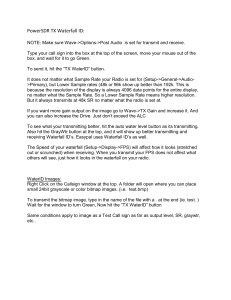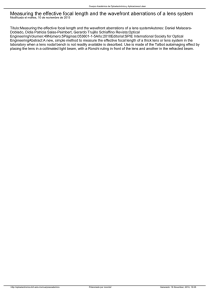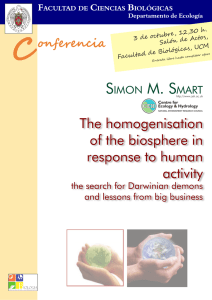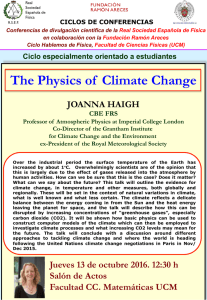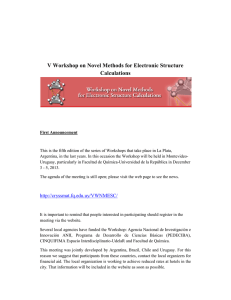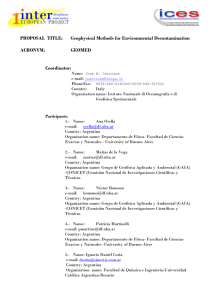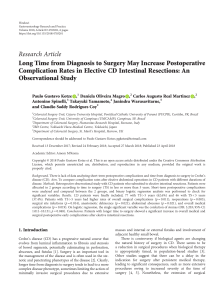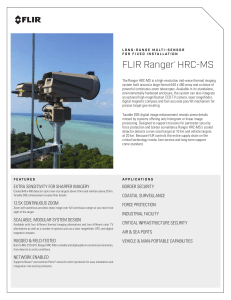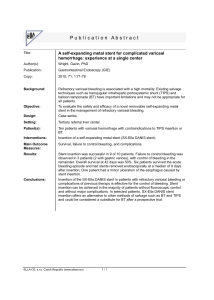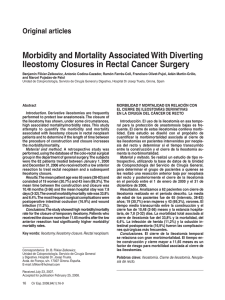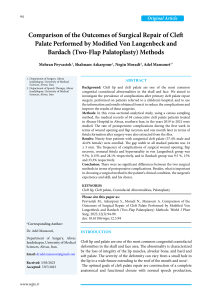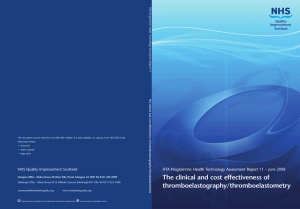Universidad Nacional de Piura
Anuncio
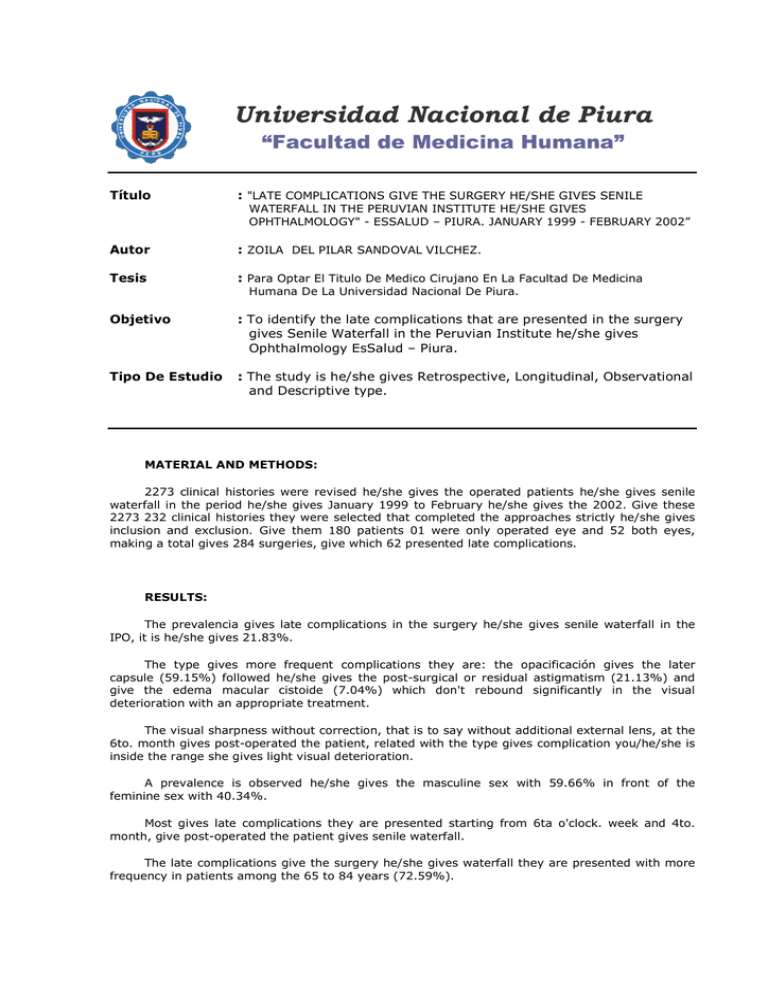
Universidad Nacional de Piura “Facultad de Medicina Humana” Título : "LATE COMPLICATIONS GIVE THE SURGERY HE/SHE GIVES SENILE WATERFALL IN THE PERUVIAN INSTITUTE HE/SHE GIVES OPHTHALMOLOGY" - ESSALUD – PIURA. JANUARY 1999 - FEBRUARY 2002” Autor : ZOILA DEL PILAR SANDOVAL VILCHEZ. Tesis : Para Optar El Titulo De Medico Cirujano En La Facultad De Medicina Humana De La Universidad Nacional De Piura. Objetivo : To identify the late complications that are presented in the surgery gives Senile Waterfall in the Peruvian Institute he/she gives Ophthalmology EsSalud – Piura. Tipo De Estudio : The study is he/she gives Retrospective, Longitudinal, Observational and Descriptive type. MATERIAL AND METHODS: 2273 clinical histories were revised he/she gives the operated patients he/she gives senile waterfall in the period he/she gives January 1999 to February he/she gives the 2002. Give these 2273 232 clinical histories they were selected that completed the approaches strictly he/she gives inclusion and exclusion. Give them 180 patients 01 were only operated eye and 52 both eyes, making a total gives 284 surgeries, give which 62 presented late complications. RESULTS: The prevalencia gives late complications in the surgery he/she gives senile waterfall in the IPO, it is he/she gives 21.83%. The type gives more frequent complications they are: the opacificación gives the later capsule (59.15%) followed he/she gives the post-surgical or residual astigmatism (21.13%) and give the edema macular cistoide (7.04%) which don't rebound significantly in the visual deterioration with an appropriate treatment. The visual sharpness without correction, that is to say without additional external lens, at the 6to. month gives post-operated the patient, related with the type gives complication you/he/she is inside the range she gives light visual deterioration. A prevalence is observed he/she gives the masculine sex with 59.66% in front of the feminine sex with 40.34%. Most gives late complications they are presented starting from 6ta o'clock. week and 4to. month, give post-operated the patient gives senile waterfall. The late complications give the surgery he/she gives waterfall they are presented with more frequency in patients among the 65 to 84 years (72.59%). The visual sharpness without correction, improves to 14.52% in comparison he/she gives 1.61% initial, taking range gives normality; and if we take the range he/she gives blindness we have that he/she gives 51.61% presented in the preoperative one it diminishes to 6.45%. The obtained sharpness visual end (with correction) it shows a remarkable recovery he/she gives the vision since he/she gives 27.52% that presented blindness in the pre-operative one, it is only reported at the end a 1.61%y 83.87% he/she also gives the patients they presented at the 6to. month gives operated a normal visual sharpness (20/20 at 20/60). As for the one it implants he/she gives the lens intraocular 96.67% it was located in later camera, that which allows to maintain gives a very similar way, the normal anatomy he/she gives the eye and it avoids a series he/she gives complications to posteriori.El to be able to he/she gives the lens measured in front of a placed lens he/she gives different measure, it doesn't rebound significantly in the visual deterioration, provided this difference is he/she gives ± 1.00 dioptria
